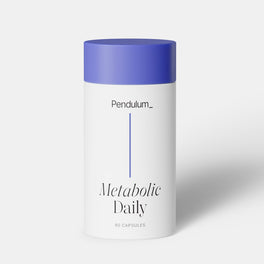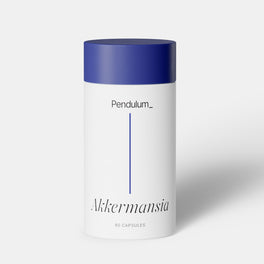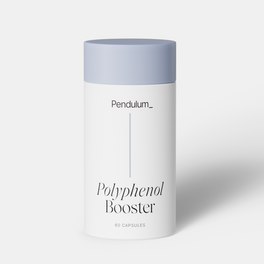Looks like your
cart is empty

Metabolic Daily
Improve metabolism

Akkermansia
Improves gut health

Polyphenol Booster
Increase antioxidants to protect cells
Stay in touch about special discounts, nutrition tips and additional education.
Looks like your
cart is empty

Improve metabolism

Improves gut health

Increase antioxidants to protect cells
By Tara Karr MS, RD, LDN, CDCES
The Institute of Medicine recommends a daily target of:
Only 5% of people get that.1
This Grand Canyon-sized gap between fiber recommendations and total fiber intake led the Dietary Guidelines for Americans to identify fiber as a “nutrient of concern.”
Furthermore, the continuing low levels of fiber intake may be considered a public-health concern in light of the health benefits related to adequate fiber intake.1
Pendulum Therapeutics makes probiotics that contain beneficial bacteria.
Despite these probiotics having different purposes (for example: Pendulum Glucose Control helps with the management of Type 2 diabetes while Pendulum Akkermansia helps with achieving better gut health) both probiotics should be taken while following a gut-microbiome-friendly diet that is high in fiber.
Here are 5 tips for adding fiber into your diet!
You may want to focus on adding soluble fiber, which has many benefits:
You can get soluble fiber from foods like:
You may also want to focus on adding insoluble fiber, which is a fiber that helps move things through your body and provides “bulk,” which helps to prevent constipation and keep you regular.
You can get insoluble fiber from foods like:
Certain foods contain starches that are resistant to digestion. These "resistant starches" go on to be fermented in your large intestine. These fibers serve as a fuel source for our gut-microbiome’s bacteria.3 The bacteria are then able to produce things like short-chain fatty acids—including butyrate.
There's no official recommendation on how much resistant starch to eat in a day, but studies have shown eating resistant starches can have benefits to blood-sugar responses and insulin sensitivity.4
To start, try including these resistant starch containing foods into your diet
If you struggle with gut issues, it would be beneficial to think about slowly adding fiber to your eating plan.
When adding fiber into your diet, you may experience a temporary period of:
For that reason, it’s wise to start slowly adding fiber when increasing toward your personal goals.
Aim for increasing roughly 5 grams each week!
Recent studies have demonstrated that an imbalance in gut bacteria—also known as dysbiosis—may lead to gut-health issues.
Although there is still much to learn, eating in a way to promote a healthy gut microbiome includes a diet full of probiotics and prebiotics!
There’s a lot of information out there on what foods you “should and should not eat,” and it can be overwhelming to navigate on your own.
Luckily, Pendulum has a team of registered dietitians who are here to support you on your health journey!
When looking for gut-health resources, always look for credentialed, qualified sites that have registered dietitians or qualified credentialed healthcare providers providing sound, scientific advice.
Also, to learn more about gut-microbiome health, follow Pendulum on social media at the following places:
References: